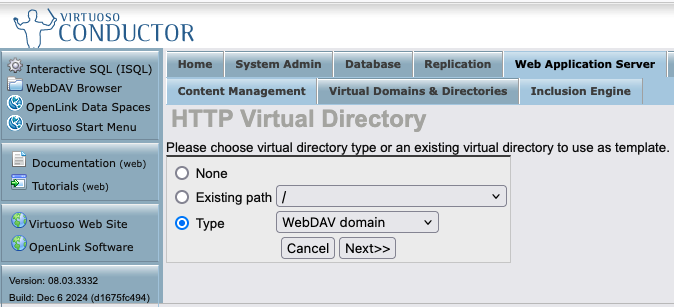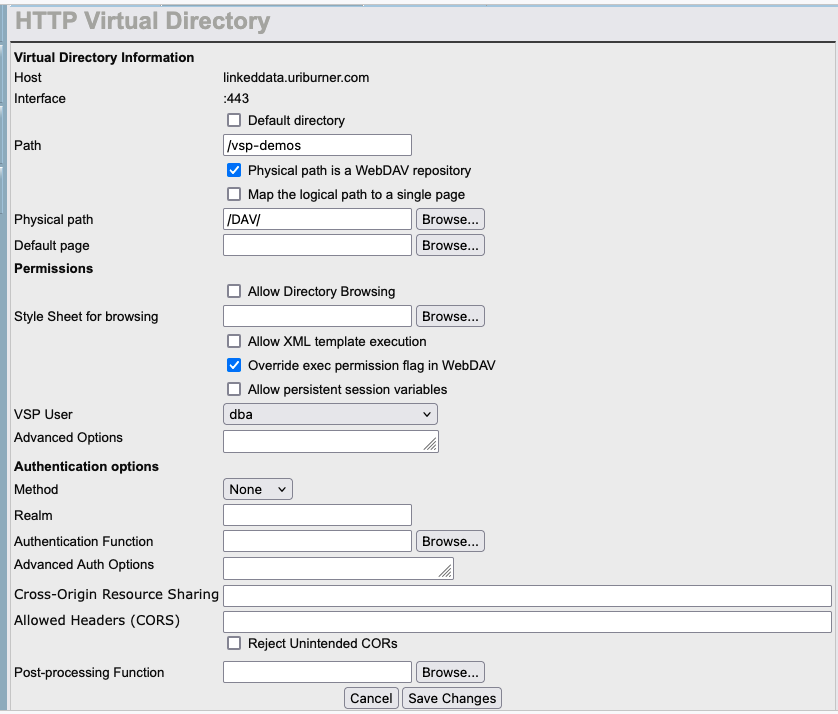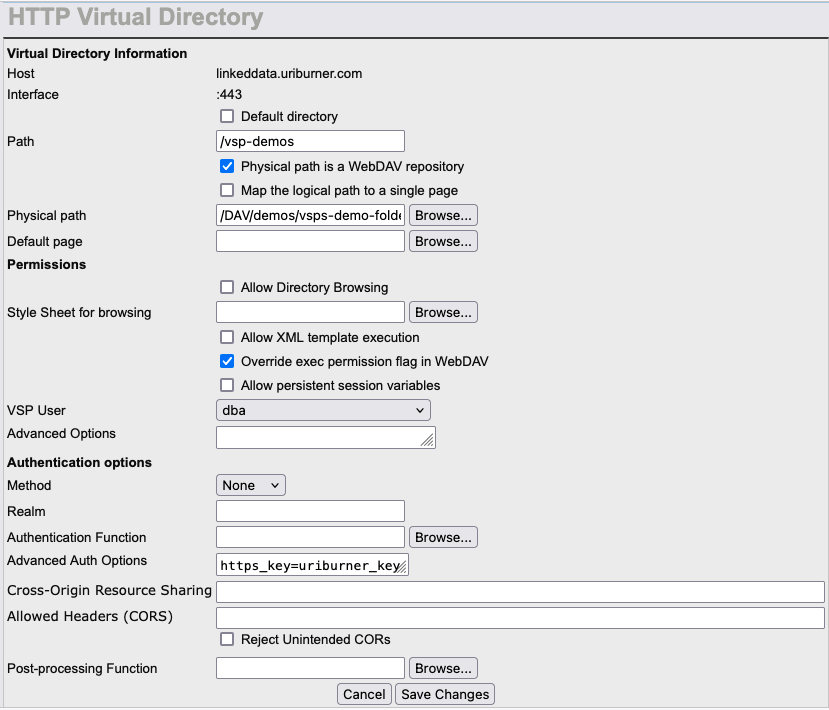What?
Virtuoso Server Pages (VSPs), like PHP, ASP, or JSP, allow dynamic merging of query results (SQL, SPARQL, or GraphQL) into HTTP requests for HTML documents. Conceptually, this is similar to mail merge or desktop publishing, where placeholders indicate content injection points.
The key advantage of VSPs is that processing happens in close proximity to the data—unlike traditional alternatives, there is no client-server interaction overhead during content merging.
How Does It Work?
A VSP is a special type of stored procedure that is invocable via HTTP. Within HTML processing pipelines, the VSP sub-system uses <?vsp ?> as a special processing instruction marker, signaling the Virtuoso server to execute the enclosed stored procedure code before sending the resulting HTML document to the client.
Detailed Breakdown
-
Purpose: Anything inside
<?vsp ?>is treated as executable VSPL (Virtuoso Stored Procedural Language) code rather than static content. VSPL is similar to PL/SQL (Oracle) or T-SQL (SQL Server), enabling direct database operations, logic execution, and dynamic content generation. -
Execution: When a VSP page (typically with a
.vspextension) is requested, the Virtuoso server parses it. Code inside<?vsp ?>is executed in-process, interacting directly with the database without requiring an external connection—improving performance compared to out-of-process methods like PHP, JSP, or ASP. -
Output: The
<?vsp ?>block generates dynamic content, which is inserted into the page at the specified location. Static content outside these blocks (e.g., regular HTML) is sent to the client as-is.
Basic VSP Example
Here’s a simple VSP page (example.vsp) demonstrating the use of <?vsp ?>:
<html>
<body>
<h1>Basic Virtuoso Server Page Example</h1>
<?vsp
declare mytestvar varchar;
mytestvar := 'Hello World';
http (sprintf ('<p>Hello, %s!</p>', mytestvar));
?>
</body>
</html>
Example Breakdown
- The
<?vsp ?>block contains VSPL code. declare mytestvar varchar;declares a variable to store a string.mytestvar := 'Hello World';assigns a value to the variable.http()is a built-in Virtuoso function for handling HTTP responses. Here,sprintfformats a string withmytestvarand inserts it into the HTML output.
When this page is requested, the server executes the VSPL code and replaces the <?vsp ?> block with the output:
<p>Hello, World!</p>
Other Examples
Below are links to additional VSP Source Code examples with varying levels of sophistication:
Deploying VSPs
VSPs are created using a text editor and can be deployed via different approaches.
Virtual Directory (Folder)
A designated virtual directory (folder) is used for storing VSP pages. This folder can be an OS-based filesystem or WebDAV-based (i.e., Virtuoso-hosted). This folder needs to have a designated SQL User account under which VSPs are executed.
For WebDAV, ensure that the “Check execution override in WebDAV” option is disabled to enable VSP execution.
For the host operating system’s filesystem, ensure that the VSP file in a folder under the instance’s HTTP root, as defined in the ServerRoot entry within the [HTTP] section of the Virtuoso configuration file (.ini).
Virtual Directory (Folder) Setup Screenshots
Step 1 – Enable WebDAV Execution Override and Set SQL USER/ROLE Account for Execution Control

Step 3 – Set Physical Directory (Folder) Path for Mapping
Deployed VSP Example Links
WebDAV File System
This approach involves performing the following steps:
- Ensure each VSP file is owned by
dav.
Only Step – Set VSP File Owner to dav
Deployed VSP Example Links
Conclusion
VSPs provide a powerful way to blend dynamic logic with static content while maintaining high performance and direct database integration. Unlike client-side scripting (e.g., JavaScript), <?vsp ?> ensures that the heavy lifting occurs on the server—ideal for data-driven web applications.
Many sophisticated interfaces, including those powering SPARQL endpoints, XMLA, and the Faceted Browser, are implemented using this approach.


